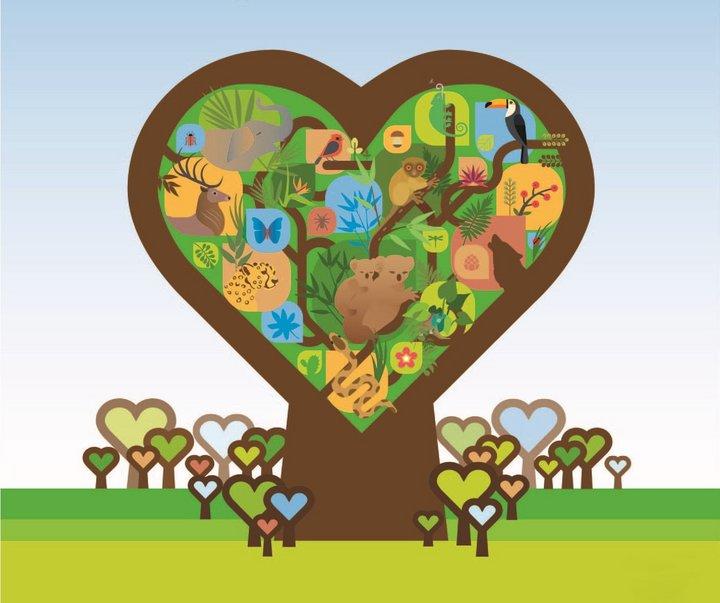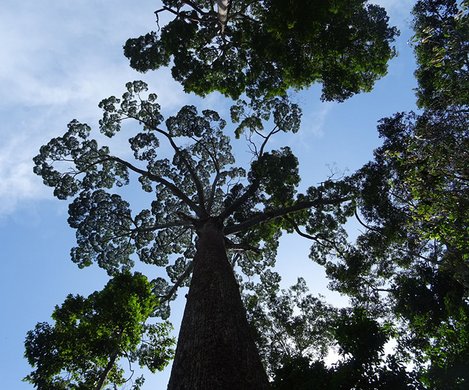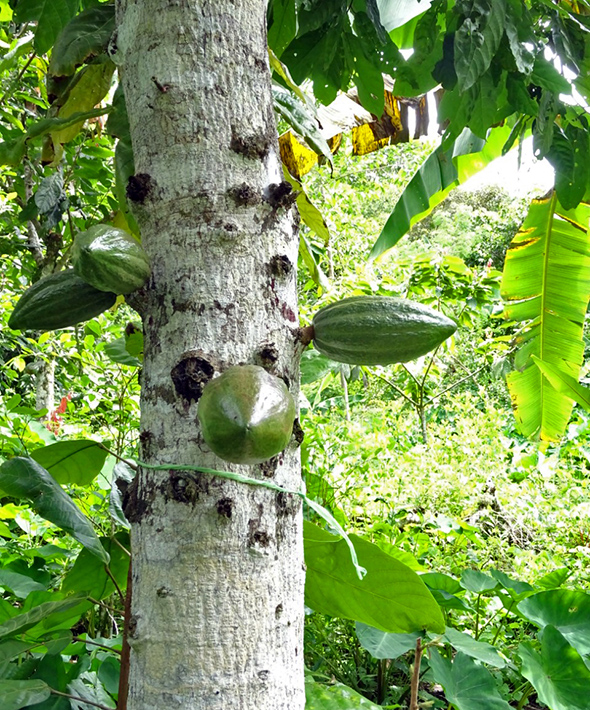An Alliance for Trees: Why forest biodiversity is "too precious to lose"

From forest fires to COVID-19, this year has already presented grave challenges to human and planetary health. Now more than ever, forests have an essential role to play. On the International Day of Forests, the Alliance of Bioversity International and CIAT outlines our research approaches to ensure better conservation and restoration, with selected examples from some of our projects around the world.
On this International Day of Forests, it's hard to overstate just how important forests are to the health and sustainability of people and our planet. As FAO reports, about 80% of the world's terrestrial biodiversity is contained within forests and more than a billion people worldwide directly depend on forests for food, shelter, energy and income.
Unfortunately, deforestation, land degradation and climate change currently pose unprecedented threats to the biodiverse forests that help ensure environmental and social resilience. This has grave ramifications. For example, deforestation and subsequent biodiversity loss is bringing people into closer contact with animal species that are natural hosts of bacteria and viruses, facilitating the transmission of diseases such as Lyme disease or COVID-19 from wildlife to humans.
At this moment, while the global status-quo of ecological practices is being disrupted, we need clear research to support better practices. Through projects in Asia, Africa and Latin America, the Alliance of Bioversity International and CIAT and its partners work to better understand the severity of risks in individual forest ecosystems, account for the commonwealth of ecosystem services provided by these forests, and promote science-based efforts for their conservation and restoration.
Threat mapping
In order to protect forests, there must be an understanding of what threatens them most. In South America, an Alliance project focuses on the tropical dry forest, a highly endemic ecosystem unique to regions of Peru, Ecuador and Colombia.
In a recently published paper, Alliance researchers found that the top 50 species of this ecosystem face considerable threats. The most notable of these threats is land-use change, as over 40% of original tropical dry forest land has already been converted for agricultural uses.

such as Light Red Meranti, Shorea leprosula.
Credit: Alliance of Bioversity International and CIAT / R. Jalonen
A parallel situation has been revealed in Southeast Asia, where Alliance researchers have created distribution and threat maps for 65 of the region’s native tree species that have a social and economic relevance. This initiative to "Establish an Information System for Native Asian Tree Species and Their Genetic Resources" (APFORGIS) was carried out at an unprecedented scale, with over 40 collaborators from 15 countries. It showed that 38% of the land originally covered by these species has been lost or degraded.
But researchers also looked to the future. They found for trees such as those in the Dipterocarp family, which are important sources of timber as well as crucial carbon sinks, up to 80% of their range could be lost in the next 30 years through land conversion, if conservation measures are not put in place.
Ecosystem services

chocolate. Credit: Alliance of Bioversity International and CIAT / D. Zavaleta
While it is critical to understand the threats that human activity pose to forests, some of the world’s most vulnerable communities need access to forest resources, and land use changes are often motivated by the improvement of local livelihoods through agriculture.
That's why the Alliance leads initiatives around the globe to properly reflect the value of agroforestry systems, in which forests provide pollination, biological pest control, and other ecosystem services when integrated with the production of valuable agricultural crops.
In South America, Alliance affiliated researchers are evaluating how birds, bats, arthropods and ants from surrounding forests can improve the productivity of Peruvian cacao (Theobroma cacao) farms. This research focuses on native cacao varieties not only as important genetic resources, but also as an economic opportunity for smallholder farmers who can earn more selling single-origin cacao.
Conservation and restoration


Empowering local stewards of the world’s forests with science-based tools is one of the main priorities of Alliance initiatives. The results of the threat-mapping research carried out in South America and Asia are now being compiled into online platforms that support the planning of conservation and restoration projects.
The Diversity for Restoration (D4R) tool, first developed by Alliance researchers for the tropical dry forest of Colombia in 2016, is being expanded to include recent work in Peru and Ecuador.
The free tool provides planting recommendations for restoration, with an emphasis on species diversity tailored to project location and purpose. A sister platform, based on the distribution and threat-mapping research in Southeast Asia, is also under development.
Training is the other fundamental component to Alliance support of global forest conservation and restoration. This February, the Alliance worked with national partners to host the first course teaching the D4R platform to 140 stakeholders from the public, academic, nonprofit, and private sectors. In Laos, Vietnam, and Cambodia, Alliance researchers and partners under the initiative "Conserving Rosewood Genetic Resources for Resilient Livelihoods in the Mekong"[2] have led 10 workshops in 6 months on topics ranging from genetic conservation strategies to seedling marketing for rosewood (Dalbergia spp.), one of the world’s most valuable timber species. Rosewood’s continued conservation provides an opportunity for the alignment of what’s best for the environment and for small agricultural economies.
Too precious to lose
In light of both ongoing initiatives and events, the intrinsic link between the wellbeing of forests and humans has been demonstrated at both the local and global level. Forests, their sustainable management and use, including in fragile ecosystems, are key to combating climate change and to contributing to the prosperity and well-being of current and future generations.
Recently, the global agricultural sector has seen a welcomed increase in support for projects focused on trees and forestry. In 2020, the Alliance will continue to conduct research that provides critical insights into the risks that forests face around the globe, and to direct international support into locally appropriate conservation and restoration strategies. The Alliance knows that forests are too precious to lose.
[1] As recently covered by The Guardian: "'Tip of the iceberg': is our destruction of nature responsible for Covid-19?".
[2] For details visit the APFORGEN site.

